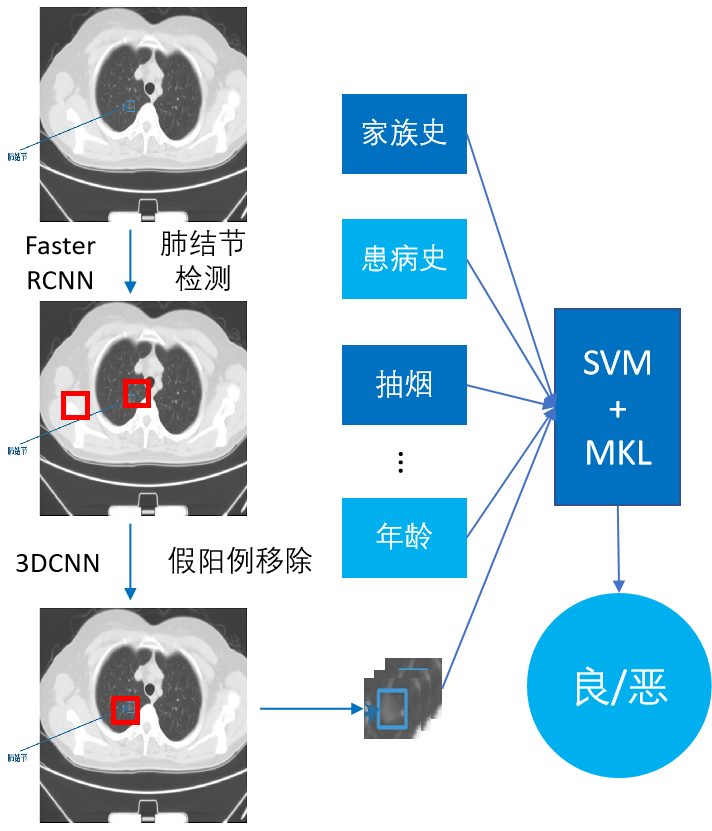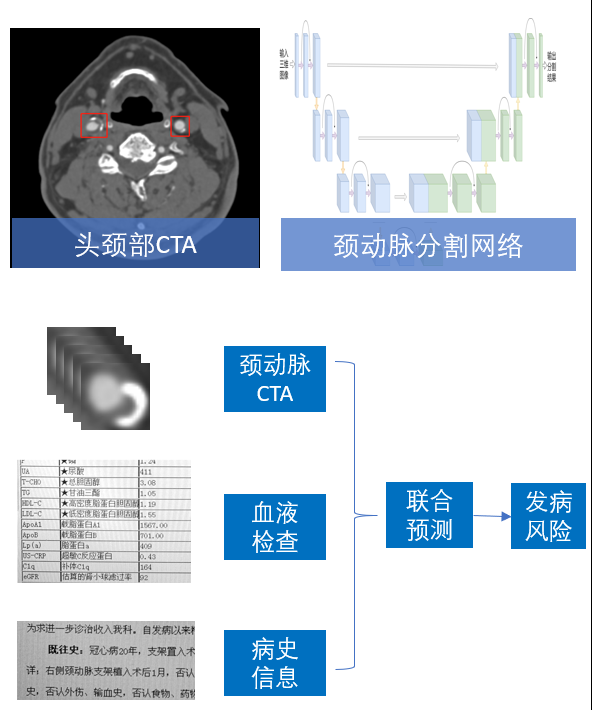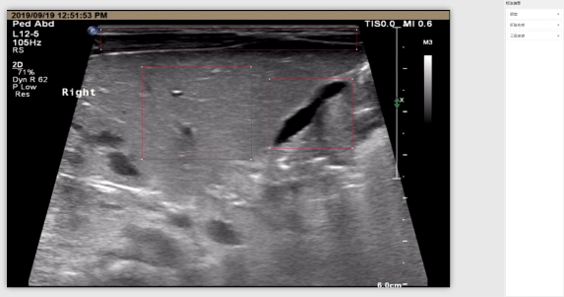
Compared with the actual age calculated by the date of birth, bone age can better reflect the biological maturity of the human body. Therefore, as a basic technology, bone age recognition is widely used in the auxiliary diagnosis of medical problems such as endocrine detection, child growth, gene defects and so on. Based on multi-core learning and improved faster RCNN, this project realizes heterogeneous feature fusion and key region extraction respectively, overcomes the defects of traditional methods such as low accuracy, manual design features and ignoring prior information.

The main contents of this project include heterogeneous feature fusion, extraction of pulmonary nodules and analysis of benign and malignant. Based on faster RCNN + 3DCNN and multi-core Learning + support vector machine, pulmonary nodules detection and benign and malignant classification are realized respectively, Finally, it realizes the integration of detection and classification, and can fuse the benign and malignant diagnosis procedures of heterogeneous special diagnosis of pulmonary nodules.

The main contents of this project include segmentation of carotid stenosis area, extraction of plaque characteristics, combined with CT, blood test and other information to jointly predict the risk of disease. Based on the improved 3D Dense-U-Net and 3D-CNN + weight transfer, carotid artery segmentation and incidence risk prediction are realized respectively, which overcomes the defects of traditional methods such as artificial design index, weight (medical score), only containing two-dimensional image information (ultrasound), and not comprehensively considering various examination data of patients.

Through the multi-factor correlation of gallbladder, liver parenchyma and triangular cord, as well as clinical information and imaging information, the project realizes multi-modal fusion through integrated learning + transformer, so as to carry out high-precision prediction, and realize interpretability analysis through fuzzy test and causal reasoning.

Copyright © 2019 BUAA Mobile and Social Computing Research Group